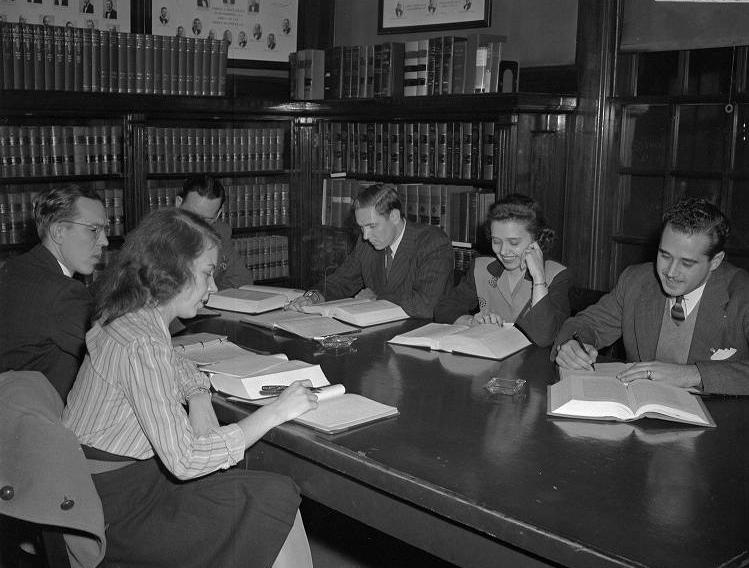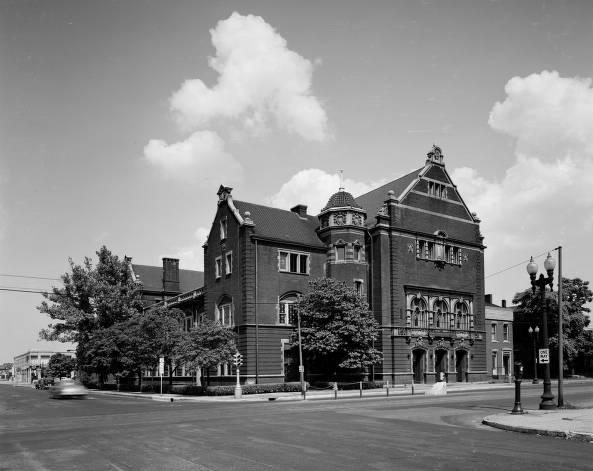Legal education in the early 19th century consisted of studying as an apprentice under a practicing lawyer. One of the earliest opportunities for formal course work in law in Indianapolis was at North Western Christian University (now ). When the university opened in 1855 it offered law as an optional subject outside the regular curriculum, a practice that continued until the mid-1870s. Early proprietary law schools in the city emphasized the close proximity of the city, county, state, and federal courts as well as student access to the state law library, the Indianapolis Bar Association library, and the general city library. These schools generally occupied one floor, containing classrooms and moot courtrooms, in an office building. Some, such as the Lincoln College of Law (1934-1941), remained open only a few years.

Judge and Charles P. Jacobs, both of whom previously taught law through North Western Christian University, and others organized the Central Law School of Indiana, which incorporated in 1879 with former governor Conrad Baker as president of the board of directors. Although successful for a time, offering a postgraduate course as well as a two-year course and featuring a well-stocked law library, the school lost ground following Elliot’s departure in 1881 and it closed a few years later.
In 1894 Elliot and four others, including , organized the Indiana Law School. The school opened in October with a class of advanced students from local offices. It offered a two-year course of study using regular and special lecturers until 1899 when it changed to the textbook and case method. In 1896 Indiana Law, along with the Indiana Dental College, the Medical College of Indiana, and Butler College, formed the short-lived University of Indianapolis, but each retained separate administration of its own school.

In 1916, the law school offered a three-year curriculum and raised the admission requirements. James A. Rohback, who joined the Indiana Law School in 1899 as a professor of law and the school’s secretary, became dean in 1901 and retained this position until his death in 1930.
In 1898 the Indianapolis College of Law was founded, offering a two-year evening program. This school, located in downtown Indianapolis’ When Building (see ) from 1898 to 1909 and then the from 1909 to 1914, was advertised in 1906 as “known everywhere for its successful graduates,” and boasted tuition of $10 per term.
The Benjamin Harrison Law School was formed in 1914 when the American Central Law School of Indianapolis (ca. 1900) and Indianapolis College of Law (1898) merged. It offered a two-year course of study, three years after 1931, which included lectures, the case method, and textbook instruction. Students submitted a thesis for graduation. The Harrison school offered only evening classes in both part-time and full-time programs and in 1935, after steady growth in enrollment, began offering a postgraduate course.
In 1936 the Benjamin Harrison Law School merged with the Indiana Law School to obtain approval from the American Bar Association (ABA). By the end of the year the new school, under the name Indiana Law School, had 300 students and ABA approval. It offered both day and night classes with three full-time and several part-time instructors.
In 1940 Indiana Law School became affiliated with Butler University but remained separate and in 1944 became affiliated with Indiana University, merging with the Indiana University School of Law to become the Indianapolis Division of that school. It operated as a part-time division of the Bloomington law school, offering courses in 16 subjects. In January 1968, the school became autonomous under the name Indiana University Indianapolis Law School, with plans for full-time day courses. Later that year it broke ground for its new building located on the IUPUI campus.
The school moved to its second building on the IUPUI campus, Lawrence W. Inlow Hall, in September 2001, with U.S. Supreme Court Justice Anthony Kennedy as featured speaker at the dedication ceremonies.
In December 2011, the school once again changed its name, following a donation from noted Indiana attorney, businessman, and philanthropist, Robert H. McKinney. Currently, the Indiana University Robert H. McKinney School of Law has both part-time and full-time divisions for its student body of approximately 900 students. It offers four degrees: Doctor of Jurisprudence (J.D.), Master of Laws (LL.M.), Doctor of Juridical Science (S.J.D.), and Master of Jurisprudence (M.J.). Students take courses not only in traditional classroom settings and online but also earn credits through live-client clinics, externships, and simulation courses. Extracurricular activities include over 30 student organizations and pro bono work opportunities. Included among its over 12,000 alumni are state and federal judges and legislators, state governors, and two U.S. vice presidents.
In 2020, Professor Karen E. Bravo became IU McKinney’s 13th dean (since affiliation with IU) and the first person of color and second woman to lead the school.

Help improve this entry
Contribute information, offer corrections, suggest images.
You can also recommend new entries related to this topic.